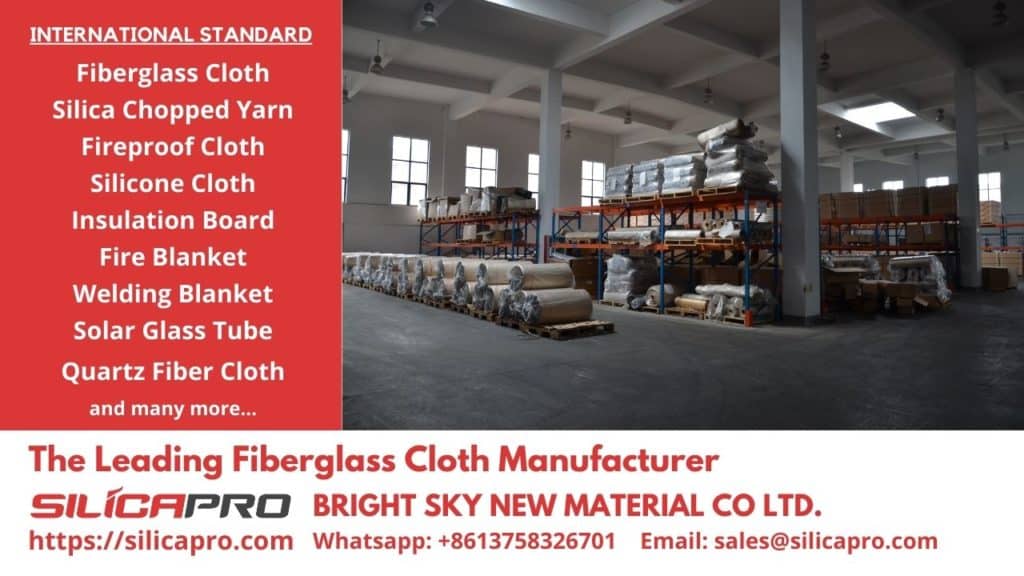
Fiberglass types consist of various categories based on the shape of the fiber and the type of fiber. Fiberglass is a fiber composite material with a strong structure but is still lightweight. Glass fiber can be used for the manufacture of aircraft, boats, car interiors, bathroom fixtures, swimming pools, water tanks, piping, insulating walls, surfboards, and various other needs.
Fiberglass has a relatively cheaper price on the market. In fiberglass, there is a composite material consisting of reinforcement in the form of fibers and a matrix in the form of plastic. These two components produce a combination of rigid, strong, yet lightweight properties.
The basic nature of glass is that it is easy to crack and break. This is because the surface pressure of the glass is too high, thus facilitating the crack propagation process on the glass surface. Therefore, the glass is made of very thin threads to avoid early cracks on the glass surface.
The diameter of the yarn or fiber is about 5 to 25 micrometers. The very small diameter will make the glass fiber very strong. The glass fibers are spun to be arranged into a woven, and the feathers are joined together to form a chopped strand mat, then a continuous roving.
Fiberglass is also known as Glass-reinforced plastic (GRP) or glass-fiber reinforced plastic (GFRP) because it consists of glass-fiber components reinforced with resin or plastic. Fiberglass types consist of various categories. This will be discussed in the next paragraph.
Fiberglass is a non-combustible material. This type of fiber is usually used as a polymer-type matrix reinforcement. The largest chemical composition of fiberglass is SiO2, and the supporting composition is Al (aluminum oxide), Ca (calcium), Mg (magnesium), Na (sodium), and other elements. Fiberglass has various types.
Contents
Fiberglass Types Based on Fiber Shape
Types of fiberglass based on the shape of the glass fiber are divided into several types, including:
- Roving is in the form of a long thread that is coiled around a cylinder.
- Yarn, In the form of sticky threads connected to filaments.
- Chopped Strand, In the form of strands, cut into certain sizes, then combined into one bond.
- Reinforcing Mat, In the form of sheets of chopped strands and continuous strands randomly arranged.
- Woven Roving, Long thread weaved and coiled on a cylinder
- Woven Fabric is a woven fiber like a woven cloth.
Types of fiberglass based on the type of glass fiber are divided into several types, including:
E-Glass Fiber
The type of fiber developed as an insulating or insulating material. This species has good formability. This E-Glass fiber has good strength and acts as a good insulator.
C-Glass Fiber
C-Glass fiber is a type of fiber that has high corrosion resistance but a lower strength level than E-Glass fiber. The price of C-Glass is higher than the type of E-Glass fiber.
S-Glass Fiber
S-Glass fiber is a type of fiber that has high stiffness with a high modulus, it is also one of the most resistant to high temperatures.
Silicapro has a wide range of fiberglass products with added E-glass fiber. The main ingredients used are SiO2 and Al2O3 by implementing quality control on all products. Each of our products has usage characteristics, supervised safety, and efficient production. Our fiberglass products and materials have excellent fibers for heat insulation.
In addition, our products can withstand high temperatures, and no bonding is used for wool products. The products we offer are also very good for heat insulation and can act as anti-corrosion with less stability. Your product has good thermal reliability with superior heat insulation. We offer many advantages. However, don’t worry. Our products can still be obtained at an affordable price. The best quality products are not always expensive, right?

Fiberglass Types Based on Finished Form
This section will describe the form of fiberglass that is ready to be used for various purposes. Types of fiberglass based on the finished form are divided into several types, including:
Fiberglass Rope
Is a type of fiberglass in the form of a braided rope that is applied for packaging purposes that require strong and durable ropes.
Fiberglass Tape
Glass fiber is made into a ribbon. This type is usually applied as thermal insulation in wrapping vessels, heat pipes, etc.
Fiberglass Cloth
Fiberglass cloth is a type of fiberglass that has a smoother texture. This type is widely used for protective or heat-resistant shells.
Fiberglass Forming Materials
Fiberglass types have been reviewed, so in this paragraph, we will discuss the main ingredients for forming fiberglass. In the late 1930s, fiberglass was optimized through continuous filament execution, so it had properties that met the prerequisites for industrial materials.
Fiberglass has a high-power capability, is elastic, and can withstand high temperatures. Fiberglass-making materials generally consist of 11 types of materials, with six materials as the main material and five materials as variations for finishing. These materials include; erosive, pigment, resin, catalyst, talc, mat, Roping, acetone, PVA, cobalt, and putty.
Erosive is in the form of a fine white powder. This material functions as a glue mat so that the fiberglass becomes strong and does not break or break easily. The next ingredient is resin in the form of a viscous liquid that is slightly red or green. Resin has several types, from cloudy to clear.
Resin prices also vary. It serves to dilute all the ingredients to be mixed. The next ingredient is a catalyst in the form of a clear liquid with a pungent odor. The catalyst acts as a catalyst, so the resin is stronger when it hardens. The addition of a catalyst depends on the variety of resin used.
Selection of forming materials and fiberglass types tailored to the needs. This is because fiberglass is a versatile material with a relatively lower cost but has good durability with a high level of flexibility. Fiberglass can be used in the aviation, automotive, electronics, medical, and marine industries.
